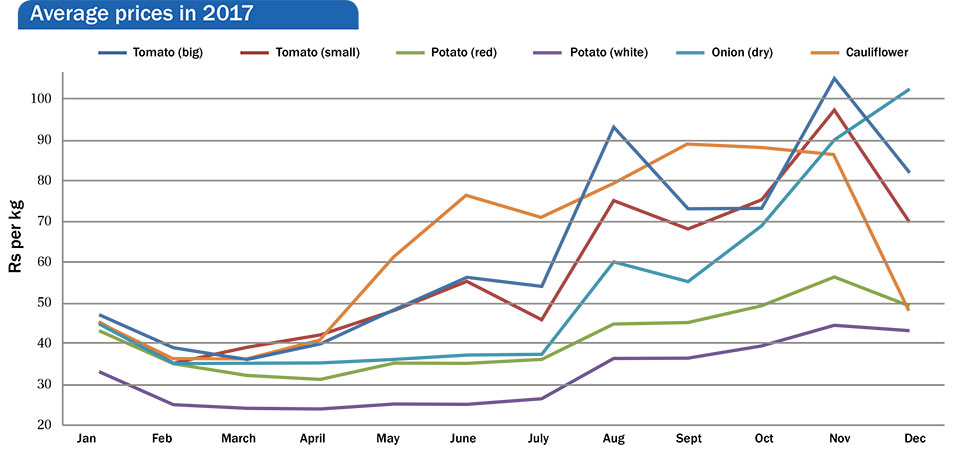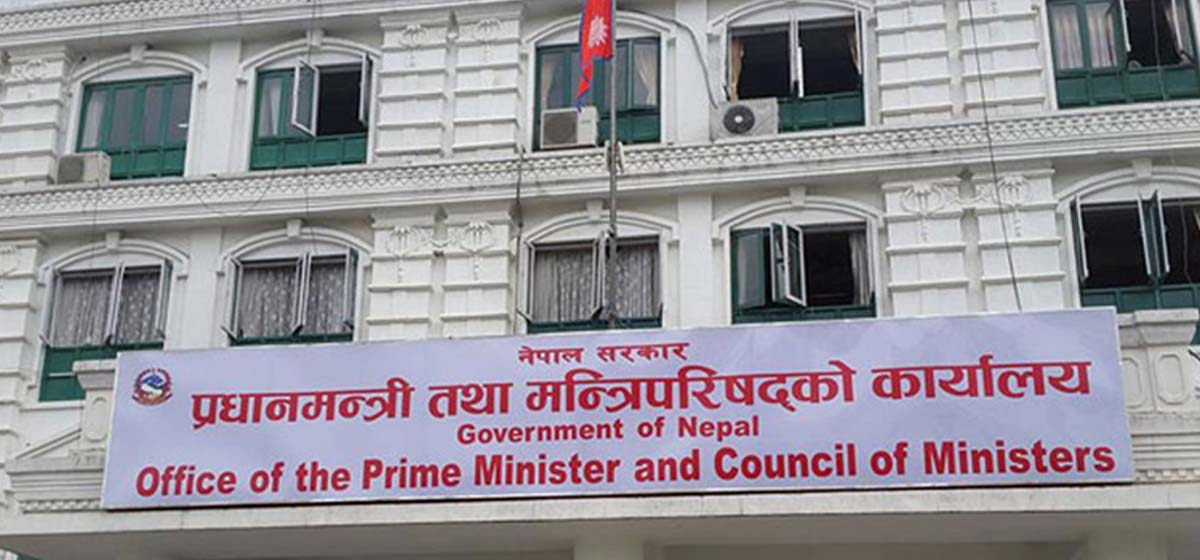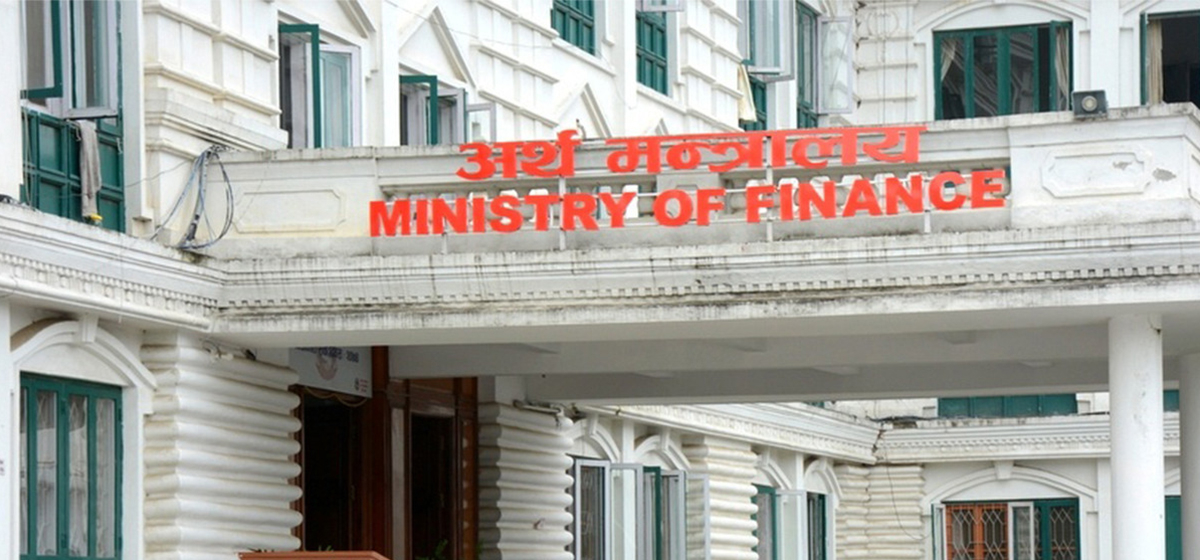
OR
2017 in review
Not a good year for Nepali kitchens
Published On: January 1, 2018 02:33 AM NPT By: KUSHAL BASNET/AYAM SHRESTHA

KATHMANDU, Jan 1: Nepali kitchens saw a huge fluctuation in prices of major vegetables throughout 2017.
Vegetables like big tomato, small tomato, red potato, white potato, onion, and cauliflower saw major price fluctuations this year. Sometimes these vegetables were dearer, and, at times, their prices came down to an affordable level.
A snap survey of retail prices conducted by Republica shows that Nepalis paid the highest prices for most of those vegetables in the last three months of 2017. The big tomato was the most expensive among popular vegetables, followed by dry onion and a small tomato, respectively.
The big tomatoes traded at an average of Rs 105 per kilogram in November, whereas average price of small tomato went as high as Rs 97 per kilogram in the same period. Price of a kilogram of onion averaged at Rs 102 in December -- the highest in the year. Red potato and white potato also saw high average prices in the last quarter of 2017.
The country's vegetable market is largely dependent on imports from India, thanks to low local production. Traders raised prices of vegetables at will, citing the rise in the price in India itself. However, low local production is also to be blamed for high vegetable prices.
The country witnessed a massive flood and landslide in August which damaged many crops in the field including vegetables. High demand in a situation of limited supply during the festivities like Dashain, Tihar, and Chhath along with the wedding season of Mangsir also made general Nepalis pay a higher price for vegetables in October, November, and December.
Government officials and vegetable traders also agree that 2017 was not a very good year for Nepali consumers compared to previous years.
“Vegetables are consumed on a daily basis which naturally causes fluctuation of demand.
Limited supply in such a situation often leads to price fluctuations,” Binay Shrestha, deputy director of Kalimati Fruits and Vegetable Development Market (KFVMDB), told Republica. “However, this year the prices, at times, were quite high compared to the past.”
He also said that floods of August affected market-ready crops in different parts of the country. “It affected production at a time when demand hits a peak. Our largest supplier, India, also had the same problem. These two factors affected vegetable prices in the domestic market,” he added.
Traders say that they have had good transactions in 2017. “I have had a good income this year. However, the year was not good for consumers as the vegetables were quite expensive and also farmers because a flood, drought, and other havocs damaged their crops time and again,” said Hari Bhandari, a trader in the market. “Moreover, dependence over India has become a problem for traders like us too. It would be easier for all if we had sufficient vegetable production,” he added.
The country's dependence over India in vegetables troubled Nepalis the most when India decided to curb onion exports in November to control price hike of the 'politically sensitive product' in its market owing to fall in the production there. Onion prices had soared to Rs 130 per kilogram in the retail markets at that time.
The country imports vegetables worth Rs 21 billion every year, according to the Department of Customs. With the total vegetable production in the country still hovering around 13 tons per hectare against the potential of 20-25 tons per hectare as estimated by the government, Nepalis will have to see similar ups and downs in prices in the future as well.
You May Like This

Not laughing at him, definitely not!
KATHMANDU, Nov 6: On November 4, in one of the Bundesliga (German top-tier football league) games, a rather unusual moment took... Read More...

Nepali workers in Saudi Arabia not allowed to return home
KATHMANDU, Feb 25: Kalicharan Shah of Saptari had left for Saudi Arabia five years ago with a two-year labour permit.... Read More...

‘500-Denominated banknote not illegal, but not exchangeable’
KATHMANDU, Nov 26: The newly-circulated Indian banknote will be illegal to exchange in Nepal until the Reserve Bank of India... Read More...









Just In
- PPMO blacklists 33 construction companies
- UK Parliament approves Rwanda deportation bill, ending weeks of legislative stalemate
- SC refuses to issue interim order in petition against Sudurpaschim province govt
- Kathmandu to host UNDP Asia Pacific regional meeting
- DoHM cautions of heat wave in West Terai and Madhesh regions for next five days
- Is former President Bhandari returning to active politics or poised for a graceful exit?
- 18th Democracy Day being celebrated today
- One killed, four others of same family injured in tractor accident









Leave A Comment